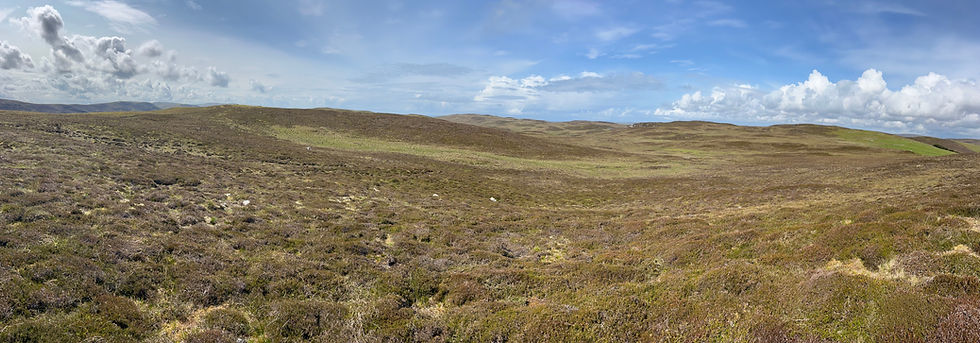Site in Focus - Broch of Burland
- Stephen Jennings

- Dec 7, 2015
- 3 min read
What’s in a name? Much more than Shakespeare would have you believe; to wit, Burland Broch.
Upon visiting the Broch of Burland to assess its overall condition and risk due to coastal erosion we set about doing our usual research and Facebook update to share what we found (more on this later). Using photographs from The Shetland Museum and Archives and information from Canmore we were surprised to see how much of the broch had disappeared since the early 20th century. Indeed many of the photographs showed a great deal more of the outer wall in place and knowing the adjacent crofts were abandoned by this time it was puzzling as to why it should have been so robbed. In steps an astute observer who pointed out that the archive photograph we chose may be in actual fact Burraland Broch rather than Burland and after further research we discovered many others are getting the two mixed up as well. You can imagine how difficult this gets so before we delve into the Broch of Burland let’s just differentiate here for a moment.
Burraland Broch is perhaps the more ‘famous’ of the two due to its position directly opposite Mousa Broch, Scotland’s best preserved and situated on an island of the same name. Located near Sandwick, a great deal of the outer walls of Burraland still stand to eight feet (it is believed what is visible is actually the second level thus what stands above original base height is the more remarkable) with interior galleries and outbuildings in evidence around the exterior. The Broch of Burland is located up the coast South of Gulberwick and ENE of Easter Quarff. Situated on precipitous cliffs, its substantial southern and eastern flank stands out on the skyline enough that it is visible from the Northlink ferry and its position is a highly defensible one; if you go in for that side of the broch debates. To be clear, both brochs are highly photogenic thus the nature of the confusion when the web proliferates with images of two different brochs labelled the same.
Is that all clear now? You have our sympathy because our heads still hurt.
But what exists and what we found at the Broch of Burland are worth sharing. Firstly, it’s an amazing broch owing much to its location and situation. Bounded on three sides by sheer drops to the sea its only approach is from the north and guarded by three ramparts with ditches. A 1983 excavation revealed the ramparts were stone faced with a rubble and soil core though attempts at diagnostic dating were unsuccessful. The broch itself is composed of 15’ walls with an internal gallery 35’ in diameter and entrance facing SW. A gallery is visible on the west side as well as a wonderful corbelled guard cell to the right and connected of the entrance. Secondary occupation, as in most brochs, occurs here as well and is likely in the form of a wheelhouse which may be most visible from above as it considerably cuts the interior diameter.
Our visit confirmed little had discernably changed since a 2002 report based on a 1987 visit by Euan W Mackie. He notes some structural decay between then and a 1963 visit though from his description it appears much is the same today. The entrance to the broch is the most concerning though we can confirm at 1 metre it too is largely unchanged (he notes 3 feet in 1987). However, anecdotal information from locals and based on the 1903 account some measurable distance has been lost over the course of a century, perhaps as much as two meters, and for this reason it raises a flag in our minds.
Well worth a visit, with the 100 foot drops to the sea we would strongly urge caution and advise anyone from approaching the entrance.
And if you take a picture…make sure you label it correctly.
Links for further information:
Broch of Burland via Canmore July 1875 Broch of Burland Today









Comments